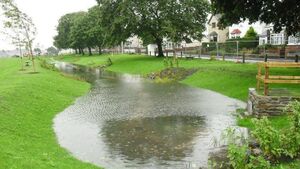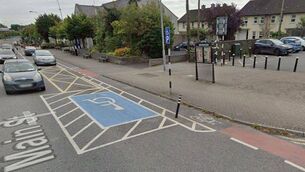Bid to improve flood resilience in Co Kildare

Sudden spot flooding has become more prevalent
Kildare County Council has published its new Sustainable Drainage Systems (SuDS) Retrofit Design Note, to set out its ambition to integrate SuDS into the existing public realm and streets in Kildare’s towns and villages.
As the impacts of climate change become more apparent and with an ageing network of surface water infrastructure, integrating SuDS into our towns and villages is crucial for improving flood resilience and enhancing amenity and landscape value.
Traditional surface water management involved hard engineered ‘grey’ solutions such as pipes and attenuation tanks to collect and quickly convey rainwater to the sewer and river networks, contributing to flooding and water pollution.
Sustainable drainage systems are a way of managing rainfall using more nature-based methods by slowing it down so that sites maintain greenfield runoff rates and do not contribute to flooding downstream, whilst making significant improvements to amenity, landscape, biodiversity, pollution control and placemaking.
While it is relatively straightforward to integrate SuDS into new developments it can be more challenging to retrofit existing streets and spaces.
In recognition of this Kildare County Council have published the Retrofit Design Note, which will be a useful resource for those designing public realm projects, and designs or upgrades of streets, parks, open space, roads, and more.
Kildare County Council has already started applying best practice in SuDS design to its own parks projects, including proof-of-concept public realm projects in Athy and Celbridge, and retrofitting five housing estates in Kildare town to improve flood resilience.
The new Sustainable Drainage Systems (SuDS) Guidelines and Design Note are available to view online.






